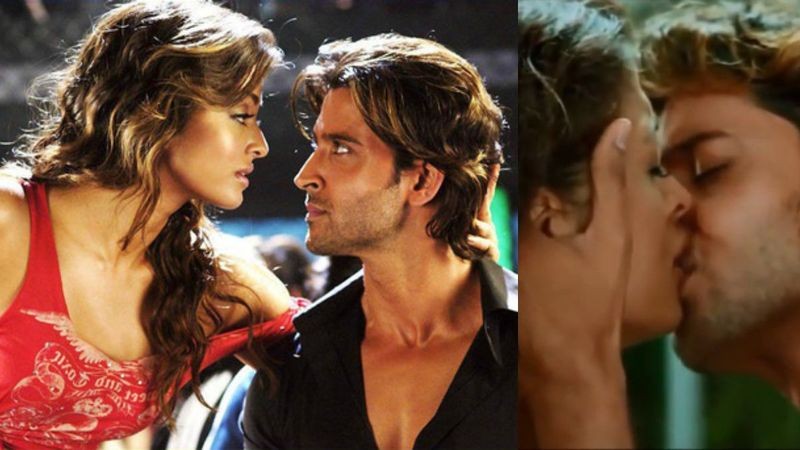
Bollywood, the Indian film industry, has long been a hub for diversity, controversy, and creativity. Dhoom 2, which came out in 2006, stands out among the numerous films that have drawn attention for a variety of reasons. Although the movie was a huge financial hit, a kissing scene between its two lead actors, Hrithik Roshan and Aishwarya Rai Bachchan, caused a legal and cultural debate. In this article, we explore the debate surrounding this specific scene and examine its societal and legal context.
The second entry in the successful Dhoom franchise, directed by Sanjay Gadhvi and produced by Aditya Chopra. Aishwarya Rai Bachchan played the attractive Sunehri, Hrithik Roshan played the charismatic thief Aryan Singh, and Abhishek Bachchan played the tough police officer Jai Dixit in the ensemble cast of the movie.
A crucial part of the movie is when the contentious scene appears. During a passionate embrace that ends in a kiss, Aryan (Hrithik) and Sunehri (Aishwarya) are together. Although this might seem like a typical movie occurrence on its own, in the Indian context, it attracted considerable attention and controversy.
A lawsuit was filed as a result of the controversy surrounding the kissing scene in Dhoom 2. A Public Interest Litigation (PIL) was submitted by an attorney by the name of Manishankar Srivastava to the Allahabad High Court's Lucknow division. He claimed that both the scene and the cultural norms of India were violated.
The PIL referred to various sections of the Cinematograph Act, 1952 and the Indian Penal Code (IPC) that address obscenity and film certification. According to Srivastava, the kiss should have been cut from the movie because it was inappropriate for Indian viewers.
A larger discussion about censorship, artistic freedom, and the representation of private moments in Indian cinema was sparked by the legal challenge.
The conflict between censorship and artistic freedom was one of the main issues in the legal challenge. While those who support censorship contend that it is necessary to uphold cultural and moral values, filmmakers contend that they should be given the creative freedom to realise their vision.
In the case of Dhoom 2, the film's director Sanjay Gadhvi defended the inclusion of the kissing scene by claiming that it was crucial to the progression of the characters and the story. He argued that storytellers should not be constrained and that artistic decisions should be respected.
The petitioner and some conservative organisations, on the other hand, argued that filmmakers should abide by certain moral and cultural standards, particularly in a country with such a diverse and rich culture as India. They held the opinion that scenes like the one in Dhoom 2 set a poor example and might result in the devaluation of cultural values.
The Cinematograph Act of 1952 is essential to India's certification and censorship of motion pictures. Before a movie can be shown in public, the Central Board of Film Certification (CBFC) must certify it. In accordance with the content of the movies, the CBFC assigns them to different categories like U (Universal), UA (Parental Guidance), and A (Adult).
A UA certificate was given to Dhoom 2 indicating that it was appropriate for viewers over the age of 12. The controversial scene in the movie had been approved for release by the CBFC, an agency under the Ministry of Information and Broadcasting.
The court's decision ultimately turned on whether the CBFC had taken the content of the movie into sufficient consideration and followed the rules set forth in the Cinematograph Act.
After taking into account the arguments from both sides, the Allahabad High Court dismissed the PIL. The court determined that Dhoom 2 had already been examined and certified by the Central Board of Film Certification, a statutory body in charge of film certification. As a result, the court ruled that it could not affect the CBFC's choice.
The court's ruling highlighted the significance of the certification procedure and the function of statutory bodies in determining whether a film is appropriate for public screening. The idea of artistic freedom within the confines of current legal frameworks was also reiterated.
The debate over the kissing scene in Dhoom 2 also reveals the shifting cultural perspectives in India. Being a diverse nation with a wide range of cultural and social values, India, what is regarded as acceptable or objectionable can differ significantly from one region to another.
Others defended the scene as a representation of shifting social norms and attitudes towards intimacy in films, while some groups in society were deeply offended by it and claimed it violated traditional Indian values.
Additionally, as audiences' tastes have changed over the years, the Indian film industry has gradually shifted towards more explicit content. Many people believed that films like Dhoom 2, with its audacious storytelling style and realistic portrayal of relationships, were a reflection of this changing cultural environment.
A case study of the intricate interplay between artistic freedom, censorship, and cultural values in Indian cinema can be found in the debate over the kissing scene in Dhoom 2. Even though it resulted in a court battle, the court ultimately upheld the certification procedure and artistic freedom, creating a precedent for future conflicts.
Additionally, it emphasised how India's cultural norms and attitudes are still changing as a result of the clash between traditional values and the evolving tastes of a diverse and dynamic society. The movie Dhoom 2 will be remembered for its tense action scenes as well as for the discussion it sparked about the complex nature of Indian cinema and society.
Salman Khan's Iconic Dance on "Saat Samundar Paar": A Tribute to Divya Bharti